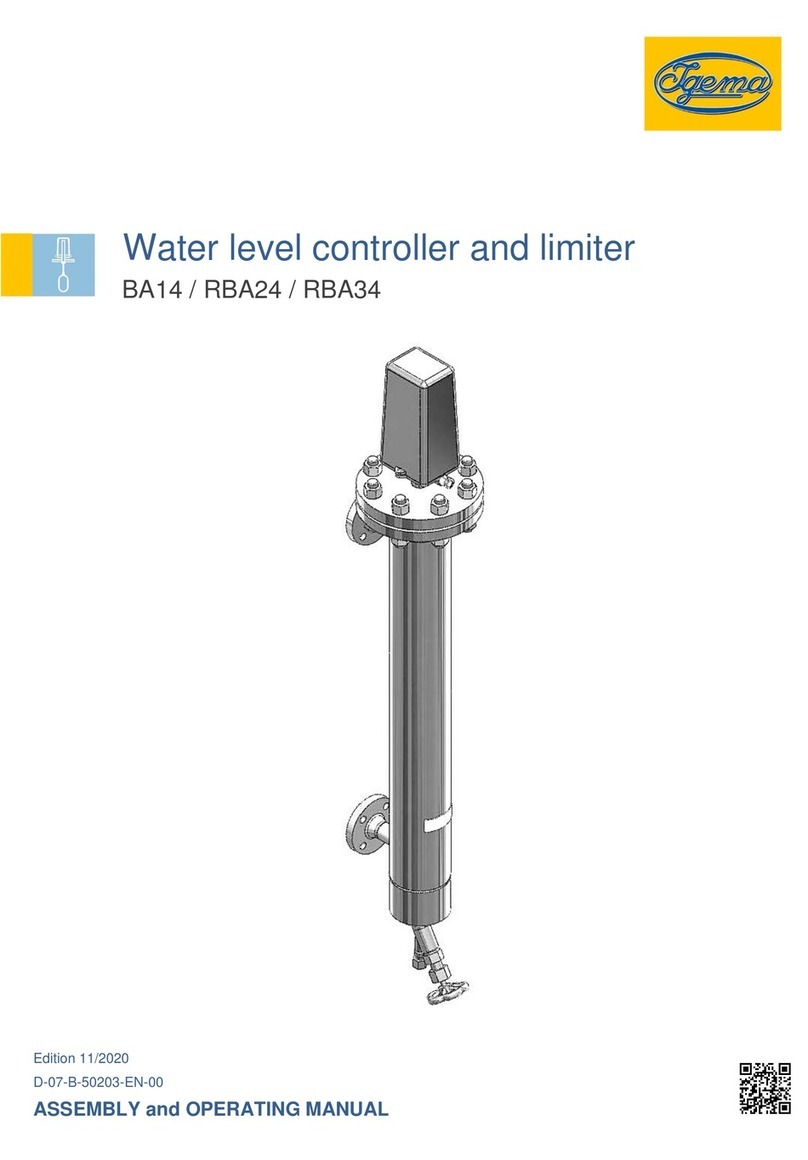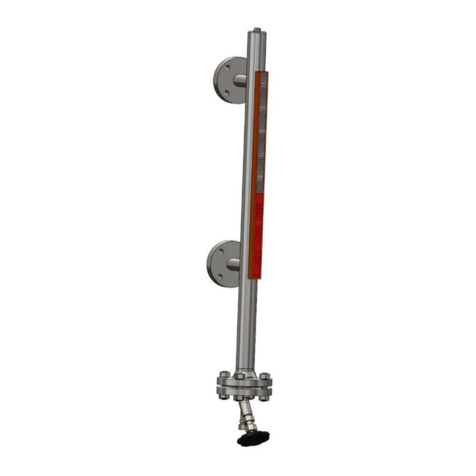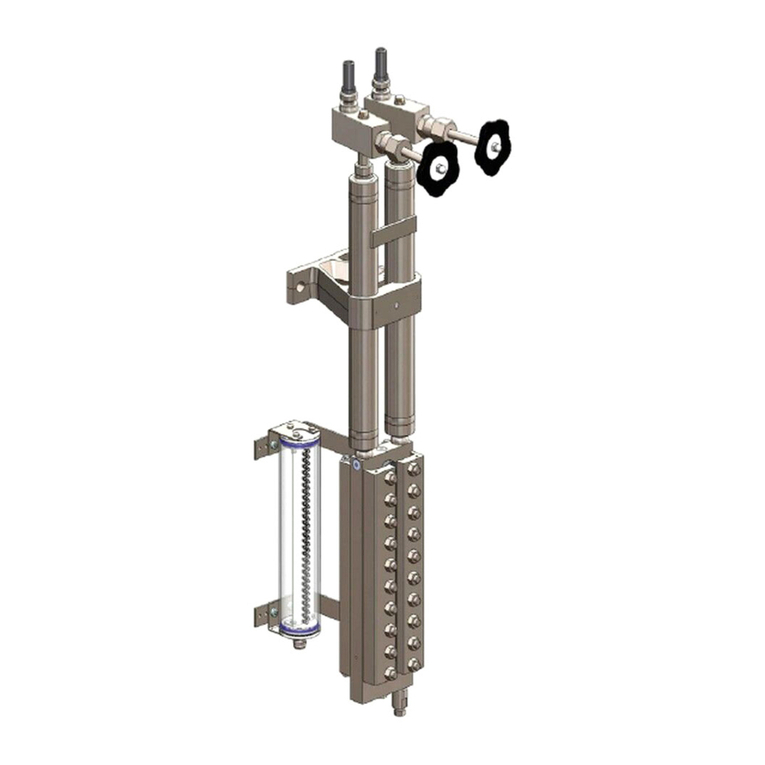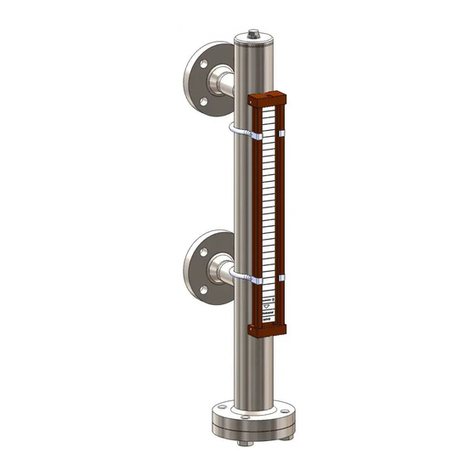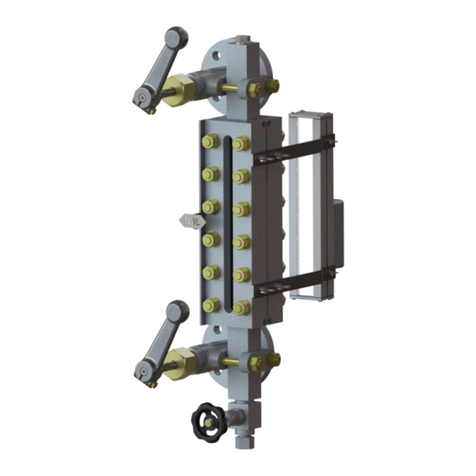Igema TG200 Owner's manual

Edition 04/2021
D-03-B-51284-EN-02
INSTALLATION AND OPERATION INSTRUCTION
TG200 with LEDSecure Slim
Transparent level gauge

2
Product philosophy
Thank you for placing your trust in IGEMA and deciding in favour of one of our
high-quality products.
For more than 100 years, measuring and control systems have been developed,
produced and sold worldwide under the IGEMA brand name.
“Steam is our passion” and we offer you the entire programme for the safe and
economic operation of your plants, especially in the steam and condensate sector.
Please read the installation and operating instructions carefully to ensure a safe and
reliable operation.
In addition to the information on installation and operation, you will also find important
information on maintenance, care, safety and value retention of your measuring and
control system.

3
Table of contents
1. Important safety instructions.............................................................................6
1.1 Symbols used in these instructions...................................................................6
1.2 Intended use of the device................................................................................7
1.3 Safety at work...................................................................................................8
1.4 Safety instructions for this device......................................................................9
1.5 Exclusion of liability...........................................................................................9
2. Contents of packing............................................................................................9
3. Important information.......................................................................................10
3.1 Intended use...................................................................................................10
4. Explanations......................................................................................................10
4.1 System description..........................................................................................10
4.2 Function..........................................................................................................10
4.3 Versions..........................................................................................................10
5. Technical data ...................................................................................................12
5.1 Dimensions.....................................................................................................12
5.2 Type of connection..........................................................................................14
5.3 Materials .........................................................................................................14
5.4 Application limits .............................................................................................14
5.5 Corrosion resistance.......................................................................................14
5.6 Rating plate / Marking.....................................................................................14
6. Construction......................................................................................................15

4
Table of contents
7. Assembly...........................................................................................................16
7.1 Version with flange..........................................................................................16
7.2 Version with welding end ................................................................................16
7.3 Heat treatment of weldseams .........................................................................16
7.4 Drain piping.....................................................................................................16
7.5 Illumination device ..........................................................................................16
8. Commissioning .................................................................................................17
8.1 Before commissioning.....................................................................................17
8.2 Commissioning of unit together with the boiler................................................18
8.2 Commissioning of the unit when the boiler is under pressure and at
temperature.....................................................................................................18
9. Maintenance ......................................................................................................19
9.1 Leakage..........................................................................................................20
9.2 Cleaning of mica shields.................................................................................20
9.3 Cleaning and purging of level gauge...............................................................21
9.4 Exchange of mica shields ...............................................................................21
9.5 Assembly ........................................................................................................22
9.6 Tightening torques ..........................................................................................22
10. Shutoff valve......................................................................................................22
10.1 Allgemeine Hinweise und Arbeitshinweise..................................................22
10.2 Functional principle.....................................................................................22
10.3 Self-closing ball safety function...................................................................23

5
Table of contents
10.4 Construction................................................................................................24
10.5 Commissioning...........................................................................................27
10.6 Maintenance...............................................................................................28
10.7 Assembly....................................................................................................29
11. Drain valve.........................................................................................................29
11.1 Information..................................................................................................29
11.2 Functional principle.....................................................................................29
11.3 Assembly....................................................................................................30
11.4 Commissioning...........................................................................................30
11.5 Maintenance...............................................................................................31
12. Case of damage.................................................................................................32
13. Spare parts ........................................................................................................32
13.1 Transparent level gauge.............................................................................32
13.2 Shutoff valve...............................................................................................35
13.3 Drain valve..................................................................................................35
14. Decommissioning .............................................................................................36
14.1 Disposal......................................................................................................36
15. Manufacturer´s declaration..............................................................................37
Table of contents
Other Igema Measuring Instrument manuals
Popular Measuring Instrument manuals by other brands

Powerfix Profi
Powerfix Profi 278296 Operation and safety notes

Test Equipment Depot
Test Equipment Depot GVT-427B user manual

Fieldpiece
Fieldpiece ACH Operator's manual

FLYSURFER
FLYSURFER VIRON3 user manual

GMW
GMW TG uni 1 operating manual

Downeaster
Downeaster Wind & Weather Medallion Series instruction manual

Hanna Instruments
Hanna Instruments HI96725C instruction manual

Nokeval
Nokeval KMR260 quick guide

HOKUYO AUTOMATIC
HOKUYO AUTOMATIC UBG-05LN instruction manual

Fluke
Fluke 96000 Series Operator's manual

Test Products International
Test Products International SP565 user manual

General Sleep
General Sleep Zmachine Insight+ DT-200 Service manual
